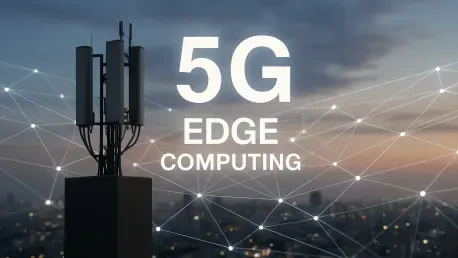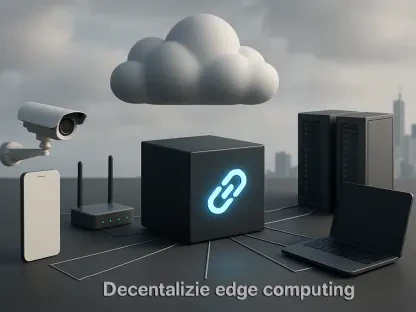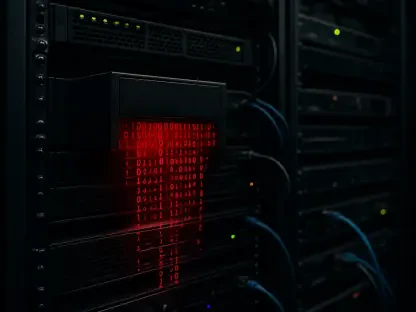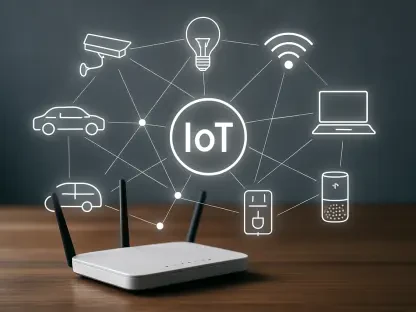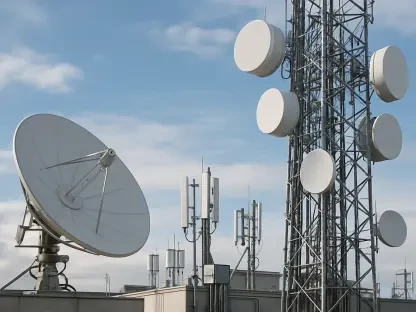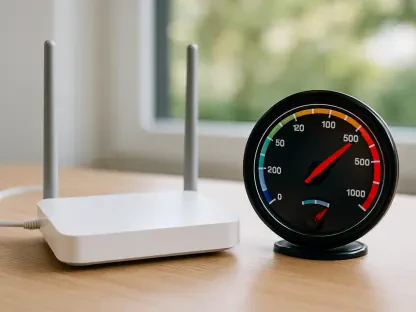In recent years, the integration of 5G and edge computing technology has transformed the fabric of commercial spaces, offering remarkable advancements in data processing speed, reduced latency, and enhanced connectivity. These technologies have fundamentally revolutionized how modern commercial buildings and complexes function, enabling them to meet the dynamic demands of contemporary users. As we advance, 5G’s ultra-low latency combined with edge computing’s localized data processing has created a powerful synergy, especially in interactive environments such as gaming and entertainment spaces, where seamless high-speed digital experiences are essential.
Enhanced Leisure and Entertainment Venues
Intelligent Infrastructure in Entertainment
The nexus of 5G and edge computing has opened new pathways for enhancing leisure and entertainment venues. These technologies enable smart infrastructure that can dynamically adjust environmental parameters such as lighting, temperature, and audio settings, optimizing user comfort and experience. For instance, office spaces can now benefit from these innovations, allowing real-time customization of work environments to improve productivity and satisfaction among employees. In retail centers, these technologies provide the basis for personalized services and experiences, setting new standards in consumer engagement. The entertainment industry, notably in sectors like online gaming, significantly benefits from these advancements.
The use of 5G and edge computing in entertainment spaces creates a seamless integration of digital and physical experiences. The result is an enhanced customer journey characterized by individualized services, real-time feedback, and continuous connectivity. The technologies enable operators to maintain high performance while ensuring robust security measures, fostering a secure atmosphere essential for customer trust and satisfaction. Consequently, these advancements in infrastructure steer the leisure sector towards a future where customer interaction and satisfaction become central to business strategies, transforming how entertainment venues engage with their audiences.
Cutting-edge Platform Capabilities
The fusion of cutting-edge technologies such as 5G and edge computing provides entertainment venues a competitive edge, allowing them to harness intricate data processing capabilities for fluid customer experiences. These technologies notably enhance the operations of venues by providing the requisite bandwidth and computational power for services like live streaming and augmented reality. Such advancements cater to modern entertainment demands, particularly in sports arenas and concert halls, where interactivity and real-time information are essential for engaging audiences. Moreover, these platforms support advanced crowd management systems, improving safety by providing real-time data analyses for effective control and response during events, thus enhancing visitor experience while ensuring safety.
Beyond their central role in entertainment, these technologies support operators functioning outside conventional regulatory frameworks, providing them the flexibility necessary for innovation without compromising on service standards. By maintaining low latency and high data processing capabilities, these technologies establish a steadfast, immersive digital environment where operational efficiencies and user engagements coexist. Thus, from personalized experiences to infrastructural innovation, 5G and edge computing continue to shape the entertainment landscape, driving broader adoption across diverse leisure sectors.
Advanced Security and Mixed-use Integrations
Security Innovations in Commercial Spaces
Security in commercial environments has reached unprecedented levels, fueled by innovations in 5G and edge computing technologies. These advancements allow rapid deployment of high-tech security measures, including high-definition cameras, facial recognition systems, and instant alert mechanisms. The integration of these technologies significantly enhances safety protocols by offering real-time monitoring and immediate response capabilities, crucial in crowded commercial settings. This ensures security measures are proactive, reducing reliance on reactive systems and consequently minimizing potential disruptions within commercial environments.
Moreover, these enhanced security measures bolster trust and confidence among users, underpinning business reputations positively. The seamless integration of smart systems ensures that security processes are embedded into operational frameworks, reducing the need for overt surveillance and interventions. By refining the security landscape in commercial sectors, these technologies support businesses to uphold safety standards, facilitating uninterrupted and secure customer interactions.
Synergistic Resource Optimization
5G and edge computing find substantial applications in integrating mixed-use developments where residential, commercial, and leisure facilities coexist. Their presence facilitates seamless resource management by fostering collaborative efforts across various sectors, optimizing areas such as parking allocation and waste collection. Smart systems employ real-time data to adjust resources based on demand, enhancing operational efficiencies and ensuring services are effectively aligned with users’ needs. The subsequent result is a streamlined operational framework that minimizes resource wastage, reduces costs, and supports sustainable business models.
The synergy generated by 5G’s capacity and the precision of edge computing enables holistic infrastructure management, where user comfort and environmental sustainability are paramount. By maintaining fluid data exchanges across sectors, these technologies support data-driven decision-making essential for the innovative and fluid management of commercial spaces. This pioneering approach not only optimizes existing resources but also paves the way for future innovations ensuring commercial areas remain adaptive and responsive to evolving user demands and market trends.
Innovations in Energy Management and Retail
Real-time Energy Management Systems
In contemporary commercial spaces, energy management sees significant improvements facilitated by 5G and edge computing. These technologies empower smart systems that can respond dynamically to changes in environmental conditions and operational demands. By leveraging 5G’s ample bandwidth and edge computing’s close-to-source data processing, facilities efficiently manage energy consumption, reducing waste and operational costs. This responsive system allows commercial centers to adjust energy distribution in real-time, directly addressing shifts in demand or environmental factors. These proactive adjustments ensure optimal energy utilization, promoting sustainable operational practices. Energy consumption becomes inherently efficient, aligning with modern sustainability goals while minimizing unnecessary expenditure.
Personalized Retail and Consumer Engagement
5G and edge computing also redefine consumer engagements within retail environments by enabling instantaneous personalized promotions and responses to changing consumer preferences. This empowers retailers to execute data-driven marketing strategies tailored to individual consumer needs, enhancing the shopping experience and increasing customer loyalty. These advanced systems ensure real-time analytics and feedback are utilized effectively, driving engagement strategies focused on personalized interactions and optimizing inventory management. By seamlessly integrating technology with consumer interfaces, retailers meet the heightened expectations of today’s tech-savvy consumers.
Efficient management avoids service lags during peak hours, ensuring smooth operations and customer satisfaction. Retail centers now leverage these technologies to enhance operational resilience and maintain a competitive market edge. As commercial spaces continue to evolve in response to dynamic market demands, widespread adoption of 5G and edge computing is crucial in delivering efficient and responsive services, contributing significantly to the spheres of customer satisfaction and business efficiency.
Future Spectrum of 5G and Edge Computing
In recent years, the melding of 5G and edge computing technology has dramatically transformed commercial spaces. These advancements propel data processing speeds, reduce latency, and improve connectivity, vital for modern buildings and complexes to cater to contemporary users’ demands. Driven by ultra-low latency, 5G combined with the localized data processing of edge computing results in a powerful synergy. This integration ushers in profound changes, particularly in interactive environments like gaming and entertainment venues, where fluid, high-speed digital experiences are critical. Enhanced data capabilities allow businesses to respond swiftly to user needs, offering more personalized and immersive interactions. The architecture of commercial spaces now embraces these technologies to support real-time analytics, energy management, and security solutions. As the demand for instantaneous information grows, 5G and edge computing ensure agile and robust infrastructure, propelling industries toward a future where responsiveness is paramount.
